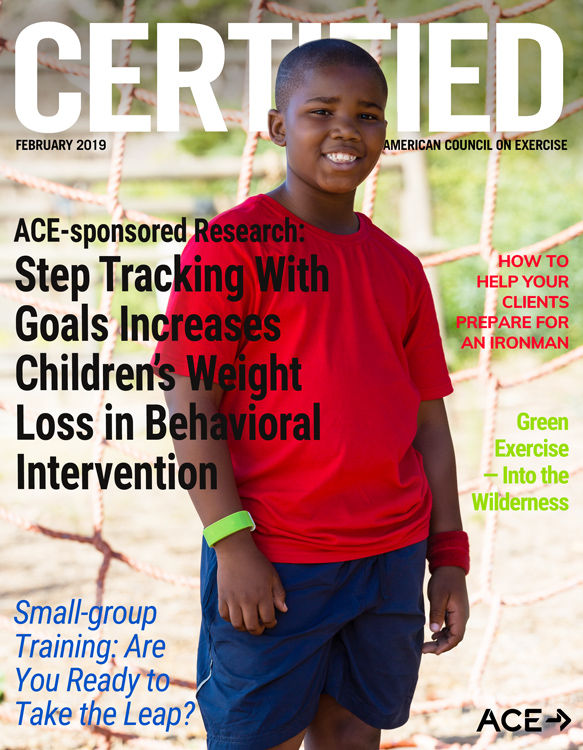
There’s no question that exercise provides numerous health benefits, but a growing body of research suggests that exercising in a “green environment” may provide even more health benefits when compared to exercise alone. In fact, green exercise has been shown to reduce stress, lower blood pressure, improve mood, increase self-esteem, and enhance perceived health. Read on to learn more about the key positive physiological and psychological benefits associated with green exercise.
The Discordance Hypothesis and Why We Need Exercise in the Wilderness
For the past 2.4 million years, approximately 84,000 generations of our ancestors lived a lifestyle comprised of hunting and gathering (O’Keefe et al., 2011). The existence of hunter-gathers was characterized by foraging and hunting for food, water procurement, building and maintenance of clothing and shelter, and social interaction. Accordingly, the human genetic profile gradually adapted over this time period through natural selection for individuals to survive and thrive in a natural environmental climate that demanded large amounts of regular physical work.
More recently, from an evolutionary perspective, there have been rapid improvements in technology that have brought about marked reductions in the physical work required as part of daily life. In fact, technological advancements over a 10,000-year time span highlighted by the Agricultural Revolution (the past 350 generations), Industrial Revolution (the past seven generations) and, in particular, the Digital Age (the past two generations), have resulted in the elimination of most previously required physical activities (O’Keefe et al., 2010). Despite the quantum leap in technology during this 10,000-year period, our genetic profile has remained largely unchanged (Eaton, Konner and Shostak, 1988).
Unfortunately, the elimination of both the need for, and the performance of, regular movement have left the human body confused and vulnerable. The shortfall between physical-activity levels anticipated by our genetic profile for normal metabolic function, and that which is actually incurred (a premise referred to as the discordance hypothesis), has created an environment ideal for the manifestation of various chronic diseases. In recent times, particularly over the past 100 years, there has been a dramatic and widespread rise in the prevalence of obesity, type 2 diabetes, and cardiovascular disease. These conditions, nonexistent-to-rare in the ancient world, are now common throughout modern society (O’Keefe et al., 2010).
Furthermore, since the turn of the 20th century, there has also been a concomitant rise in the number of people living in urban areas relative to rural settings (Pretty et al., 2005). Less access to the green environments found in and around rural areas has been linked to high levels of psychophysiological stress, elevated blood pressure and increased risk of mortality (Grazuleviciene et al., 2015).
So, what is the solution to this epidemic of chronic diseases? Although many approaches are likely necessary, taking a closer look at the physical activity patterns of our Paleolithic ancestors may yield valuable understanding into what is needed to restore metabolic health and well-being, including exercise in the wilderness or green exercise.
What Is Green Exercise?
The term green exercise refers to exercise performed in natural environments. It is well known that regular exercise training itself confers various health and psychological benefits including the prevention and management of hypertension, obesity, type 2 diabetes, dyslipidemia and cardiovascular disease. In the past couple of decades, there has been considerable scientific inquiry focused on whether a synergistic effect exists in terms of health benefits when exercise is performed in natural environments. Indeed, there appears to be mounting evidence that green exercise provides an array of beneficial responses ranging from improved cognitive function and enhanced cardiac function to reduced levels of circulating stress hormones.
What Is the Evidence for Green Exercise?
As mentioned, there is now a substantial body of evidence demonstrating the positive physiological and psychological benefits associated with green exercise. Here are findings from five key papers:
- Researchers in the United Kingdom (Pretty et al., 2005) explored the mental and physical health outcomes of green exercise in a cohort of 100 adults with an age range of 18 to 60 years. Participants exercised for 20 minutes on a treadmill while exposed to projected scenes that fell within the following categories: urban pleasant, urban unpleasant, rural pleasant and rural unpleasant. The authors reported that there was a synergistic effect of exercise coupled with exposure to nature. Moreover, it was concluded that, compared to exercise alone, green exercise was more impactful in terms of improving cardiovascular and mental health.
- Another study performed by researchers in the United Kingdom (Duncan et al., 2014) examined the effect of moderate-intensity cycling while viewing a green environment relative to exercise alone on cardiovascular measures and mood state. Participants were all primary school children and completed two 15-minute bouts of moderate-intensity cycle exercise in counterbalanced order: one with no visual stimulus vs. viewing a film of cycling in a forest (i.e., green exercise). Among the children, green exercise elicited a greater post-exercise hypotensive response when compared to exercise alone.
- A group of international researchers (Grazuleviciene et al., 2015) investigated the effects of green exercise relative to exercise alone on various hemodynamic parameters (e.g., heart rate, blood pressure, cardiac output) in a cohort of 20 individuals diagnosed with coronary artery disease. Participants were randomized to one of two groups: walking in a city park (i.e., green exercise) or walking along a busy urban street. Both groups followed the same exercise program consisting of seven consecutive days of walking for 30 minutes per day at moderate intensity. The green exercise group experienced greater reductions in diastolic blood pressure, resting heart rate and heart-rate recovery. The researchers concluded that green exercise elicited more favorable changes to cardiac function in patients with heart disease, and that rehabilitation programs should consider integrating more green exercise.
- Norwegian researchers (Calogiuri et al., 2015) examined the effects of a green exercise workplace intervention on various psychological and physiological parameters. Participants exercised either in an indoor setting or outdoors in a nature area (i.e., green exercise). Both groups performed two comparable exercise routines consisting of both aerobic- and strength-related training for 45 minutes at 55% heart-rate reserve. The researchers concluded that green exercise performed within the workplace context may be an effective strategy for managing stress among company employees.
- Finally, in a multi-study analysis, researchers (Barton and Pretty, 2010) addressed the question: “What is the best dose of green exercise for improving mental health?” Several important conclusions were drawn by the investigators. First, they found that both men and women had comparable improvements in self-esteem following green exercise. Second, green exercise in various environments improved both self-esteem and mood; however, the presence of water elicited more potent beneficial effects. Third, it was reported that there were dose-response relationships between both the intensity and duration of green exercise and mental health benefits. Specifically, it was shown that there were substantial benefits from short, light-intensity engagements in green exercise, followed by diminished, yet still positive improvements with longer durations and higher intensities.
How Health and Exercise Professionals Can Apply This Research to Their Work With Clients
Although most of us live in a world where much of the physical work required of us has been eliminated and natural outdoor environments are continuously shrinking, our intrinsic exercise capacity and requirements are nearly identical to that of our Paleolithic ancestors. Nevertheless, one successful strategy you can employ as a health coach or exercise professional is to encourage engagement in green exercise. Here are some practical recommendations you can make to your clients based on the research findings presented above.
It is important that both you and your clients establish realistic goals and expectations for green exercise. In particular, the fact that natural outdoor environments are continuously shrinking creates a challenge to the pursuit of green exercise. Furthermore, pollution, non-trivial ultraviolet radiation (UV) and environmental stressors (e.g., high heat and/or humidity) may pose health risks and therefore limit green exercise in certain geographical locations.
Programming Recommendations
Recommendations for green exercise programming parallel widespread physical activity recommendations: moderate-intensity green exercise for a minimum of 30 minutes, five days per week (or 150 minutes) or vigorous-intensity green exercise for a minimum of 25 minutes, three days per week (or 75 minutes) or an equivalent combination of both.
Strategy #1
We were designed to ambulate on grass or dirt. Ideally, the more walking that can be done on natural surfaces, the better. We are also genetically adapted to daily, high volumes of low-to-moderate intensity walking. Depending on the individual client and his or her health history, anywhere between 1 to 5 miles/day can be recommended.
Strategy #2
Green exercise can include activities related to the acquisition of food. Indeed, for thousands of years a natural relationship existed between outdoor physical activity and procurement of food and water. Recommended activities include:
- Fishing
- Gardening
- Hunting
Strategy #3
Encourage your clients to select weekly social and/or recreational activities that require a meaningful amount of physical exertion in a green environment. Recommended activities include:
- Golfing
- Group outdoor classes (e.g., boot camp, yoga, Zumba)
- Pickleball
- Cross-country skiing
Strategy #4
Dose-response relationships between both the intensity and duration of green exercise and health benefits have been established (Barton and Pretty, 2010). Remind your clients that they can obtain substantial benefits from short, light-intensity engagements in green exercise, followed by diminished, yet still positive improvements with longer durations and higher intensities.
Strategy #5
It has been shown that increased green space availability and access encourages individuals to spend more time outdoors in green exercise and related activities. However, an unintended health consequence is that increased green space has been found to be associated with higher odds of having skin cancer (Astell-Burt et al., 2014). Accordingly, be sure to remind your clients to protect themselves from sun exposure by wearing appropriate gear (e.g., hat, UV-protective clothing) and sunscreen when exercising outdoors.
References
Barton, J. and Pretty, J. (2010). What is the best dose of nature and green exercise for improving mental health? A multi-study analysis. Environmental Science and Technology, 44, 3947-3955.
Calogiuri, G. et al. (2015). Green exercise as a workplace intervention to reduce job stress. Results from a pilot study. Work, 53, 99-111.
Duncan, M.J. et al. (2014). The effect of green exercise on blood pressure, heart rate and mood state in primary school children. International Journal of Environmental Research and Public Health, 11, 3678-3688.
Eaton, S.B., Konner, M. and Shostak, M. (1988). Stone agers in the fast lane: chronic degenerative diseases in evolutionary perspective. The American Journal of Medicine, 84, 739-749.
Grazuleviciene, R. et al. (2015). The effect of park and urban environments on coronary artery disease patients: A randomized trial. BioMed Research International, 2015, 403012, 9 pages.
O’Keefe, J.H. et al. (2011). Exercise like a hunter-gatherer: A prescription for organic physical fitness. Progress in Cardiovascular Diseases, 53, 471-479.
O’Keefe, J.H. et al. (2010). Organic fitness: Physical activity consistent with our hunter-gatherer heritage. The Physician and Sports Medicine, 38, 1-8.
Pretty, J. et al. (2005). The mental and physical health outcomes of green exercise. International Journal of Environmental Health Research, 15, 319-337.





 by
by 


